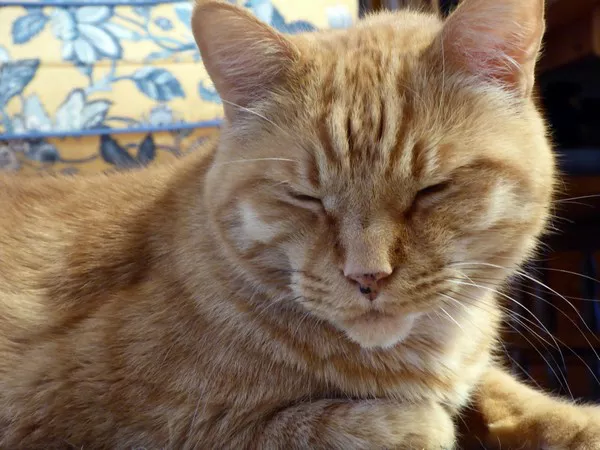As much as we love our feline companions, there may be times when we need to leave them alone for an extended period. Whether it’s for a weekend getaway, a business trip, or any other reason, the idea of leaving a cat alone for 3 days can be worrying. As independent as cats are, they still need attention, care, and a safe environment to thrive. In this article, we will explore the key considerations for leaving a cat alone for three days, the risks involved, and the preparations required to ensure your cat remains healthy and happy in your absence.
Overview of Leaving a Cat Alone
Cats are often seen as independent pets, known for their ability to entertain themselves and handle solitude better than many other animals. However, this independence does not mean that they don’t rely on their owners for essential care and emotional well-being. When you must leave your cat alone for a period of time, whether for a few days or longer, it’s essential to understand the potential risks and challenges involved.
General Recommendations Regarding Leaving Cats Alone
While cats can generally tolerate being alone for short periods, the general advice from veterinarians and animal behaviorists is that cats should not be left alone for more than 24-48 hours without supervision. A longer absence may expose the cat to potential health risks, safety concerns, and emotional distress. That said, many owners must leave their cats alone for various reasons, so it’s important to prepare adequately.
Ensure adequate food and water: Cats must have enough food and fresh water to stay hydrated and healthy. For a three-day period, it’s essential to provide a means for replenishment, such as automatic feeders and water dispensers.
Ensure access to a clean litter box: A dirty litter box can cause a lot of stress and discomfort for a cat. Ensuring that the litter box is clean and accessible is vital.
Environmental enrichment: Cats are curious and intelligent creatures, and leaving them without stimulation can lead to boredom, stress, or destructive behavior. Providing safe toys and activities can help mitigate this.
Consider alternatives: For extended absences, consider options such as pet sitters, boarding facilities, or trusted neighbors who can care for the cat in your absence.
Risks of Leaving a Cat Alone for 3 Days
While some cats may seem perfectly capable of handling a few days of solitude, there are real risks to leaving your pet unsupervised for an extended period. These risks include health concerns, behavioral issues, and safety hazards.
Health Risks
One of the most significant concerns when leaving a cat alone for three days is the potential for health issues. Cats require constant access to food and water to maintain their health. Common health risks that could arise from leaving a cat alone for an extended period include:
Dehydration: Cats often don’t drink as much water as they should, and a lack of fresh water could cause dehydration, especially in hot weather.
Injury or Illness: Cats are curious creatures and may injure themselves or become ill from eating something they shouldn’t. Without supervision, it may be difficult to address the issue in a timely manner.
Food Spoilage: If you are leaving food out for the cat, there is a risk it could spoil or be eaten in an inappropriate quantity. Cats left without fresh food for extended periods may also experience digestive upset.
Behavioral Issues
Another risk of leaving a cat alone for an extended period is the potential for behavioral issues. Cats are highly sensitive to changes in their environment and routine. Long periods of isolation can cause significant stress, leading to anxiety, destructive behavior, and changes in eating and sleeping habits. Some signs of stress or anxiety in cats include:
Excessive meowing or vocalization: This could indicate distress or confusion.
Destructive behavior: Cats may scratch furniture, knock things over, or engage in other destructive behaviors as a result of stress.
Lack of appetite or changes in eating habits: Some cats may stop eating altogether or eat more than usual when stressed.
Safety Concerns
Safety is another major consideration when leaving a cat alone. Without human supervision, there is a greater risk of accidents, particularly if the cat has access to areas of the home where it could get hurt. For instance, cats can sometimes get stuck in narrow spaces or chew on dangerous items. In addition, they may accidentally knock over or ingest hazardous substances such as cleaning products, plants, or electrical cords.
Preparations Before Leaving
If you must leave your cat alone for three days, it’s essential to take the proper precautions to ensure their safety, health, and well-being. Here are the key preparations to make before heading out:
Food and Water
You should ensure your cat has enough food and water to last for the duration of your absence. There are a few options available to make this easier:
Automatic feeders: These devices can dispense food at scheduled intervals, ensuring your cat is fed even if you’re not home.
Water dispensers: A pet water dispenser can provide a steady supply of fresh water and prevent dehydration.
Multiple food and water stations: To minimize the risk of running out, you may want to place multiple bowls of food and water in different areas of your home.
Litter Box Maintenance
For a cat to be comfortable and healthy, they need access to a clean litter box. If you’re leaving for three days, you should ensure that the litter box is clean and has enough space for your cat to relieve itself. There are several strategies you can use:
Multiple litter boxes: If you have more than one cat, or if your cat is particularly finicky, having multiple litter boxes can help reduce stress and prevent messes.
Self-cleaning litter boxes: These can be a great investment if you often have to leave your cat alone for extended periods. They automatically clean the box after each use, ensuring it remains fresh.
Litter box liners and extra litter: Make sure there is enough litter to last the full three days.
Environmental Enrichment
While cats are known for their independent nature, they still need stimulation to avoid boredom and stress. Consider providing:
Toys: Interactive toys, such as treat-dispensing puzzles or motion-activated toys, can keep your cat engaged.
Scratching posts: Cats need to scratch to maintain their claws and relieve stress.
Safe exploration space: If possible, leave your cat with access to different rooms or safe areas to explore.
Cat-Proofing the Home
Before leaving your cat alone, make sure to secure any dangerous items or areas. This includes:
Toxic plants: Remove or place toxic plants, such as lilies or poinsettias, out of reach.
Sharp objects: Secure sharp objects like scissors, needles, or glass items that could be harmful.
Electrical cords and wires: Protect or cover any exposed cords that your cat could chew on.
Alternatives to Leaving a Cat Alone
If you’re uncomfortable with the idea of leaving your cat alone for three days, there are several alternatives to consider.
Pet Sitters
One of the best solutions is hiring a pet sitter who can visit your cat daily or stay with them during your absence. A pet sitter can not only provide food and water but also offer companionship and check on your cat’s well-being. Many pet sitters can even send you updates or photos to reassure you while you’re away.
Boarding Facilities
If you prefer professional care for your cat, consider cat boarding facilities. These facilities are equipped to care for cats during their owners’ absence, offering food, clean litter, and enrichment. Some even provide playtime, grooming, and medical care if needed. Boarding facilities can be a good option for cats who are prone to stress or health issues when left alone.
Friends or Neighbors
If you have a trusted friend or neighbor nearby, you might ask them to check in on your cat regularly. This could involve feeding them, cleaning the litter box, and providing some company. Having someone familiar visit the cat can help reduce anxiety and stress.
Monitoring and Communication
Modern technology has made it easier to keep tabs on your cat while you’re away. You can use pet cameras to monitor their well-being and even communicate with them.
Pet Cameras
Pet cameras with two-way audio can help you monitor your cat’s behavior and communicate with them remotely. These cameras also allow you to check for signs of stress or health issues.
Emergency Contact
Make sure to leave emergency contact information with a neighbor, pet sitter, or friend who can assist in case of an emergency. Include your vet’s contact information and any medical details about your cat’s health.
Conclusion
Leaving a cat alone for three days requires careful planning and preparation. While some cats may be able to handle solitude for short periods, the risks of health problems, behavioral changes, and safety hazards should not be underestimated. The best options for ensuring your cat’s well-being during your absence are to arrange for a pet sitter, consider a cat boarding facility, or enlist the help of a trusted friend or neighbor. By taking the necessary precautions and planning ahead, you can ensure that your cat remains happy, healthy, and safe while you’re away.
Related Topics



























